Using VMware vSphere VM Customization Specification

Deploying virtual machines is a basic part of VMware vSphere administration. Virtual machines are deployed, cloned, etc. Customizing the guest operating system can be a very labor intensive set of tasks from a provisioning standpoint. Thankfully, the VM Customization Specifications tool can be leveraged to take a lot of the heavy lifting out of this process. We can choose to utilize the Custmization Specification to customize guest operating systems with cloning or in customizing an existing guest operating system that is powered off. Let’s take a look at Using VMware vSphere VM Customization Specification and how create the specification to use with customizing a guest operating system.
Creating VMware VM vSphere Customization Specification
To create our new Customization Specification, we navigate to Policies and Profiles in our vCenter web client or Flash client. Below, I am using the newest HTML5 web client that is available. See how to use the most current HTML5 web client available with the HTML5 web client fling. Below we have navigated to the Policies and Profiles screen where we can click the New button to add a new Customization Specification.

The New VM Guest Customization Spec wizard begins. The first screen allows us to customize the Name and target OS of the virtual machine. Note here we can select both Windows and Linux, use a custom SysPrep answer file and control how SIDs are handled.
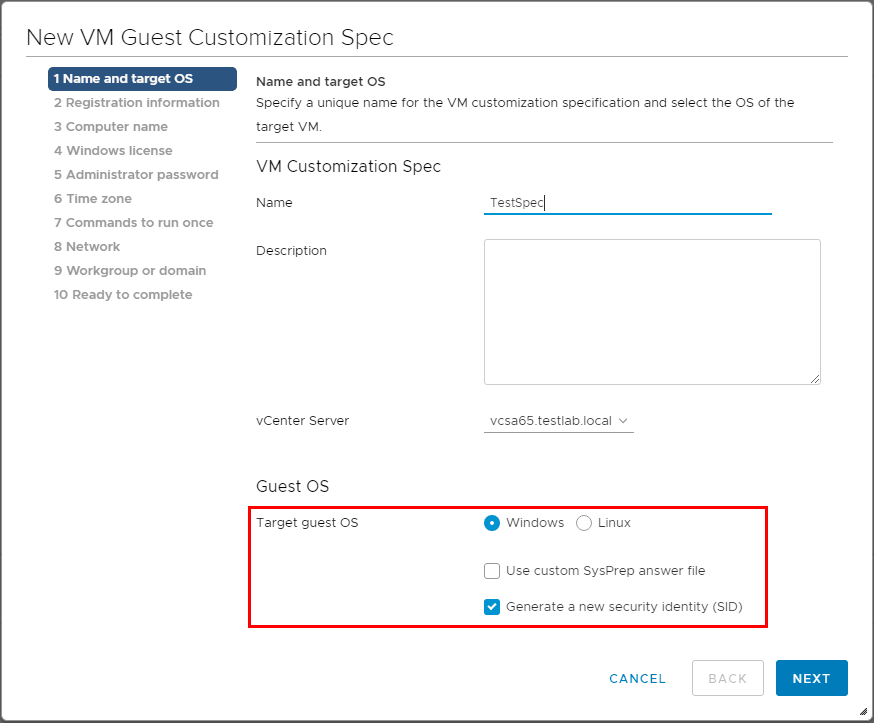
Next, we set the Registration information with the Owner name and Owner Organization.
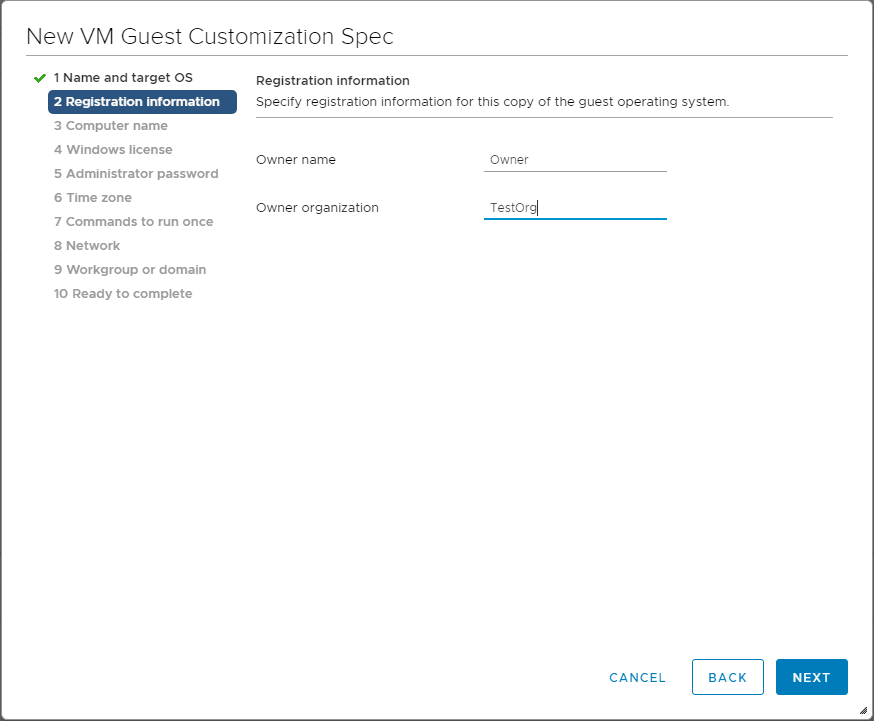
We can decide how we want to handle the computer name creation. There are three options here: User the virtual machine name, Enter a name in the Clone/Deploy wizard, and Enter a name.
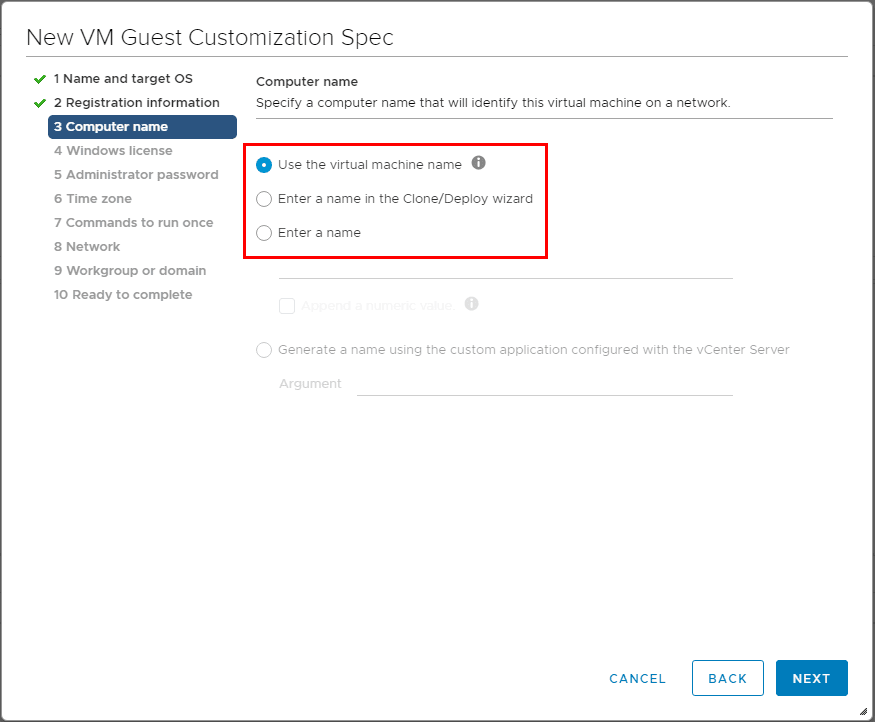
We can choose whether or not we want to specify Windows licensing information as well.
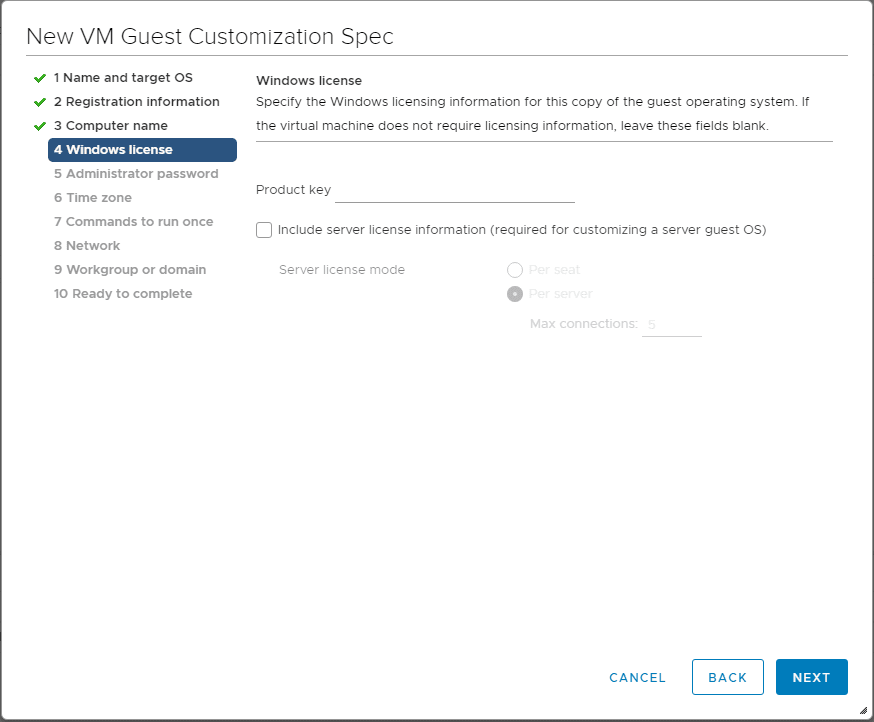
Set the administrator password and choose whether or not to automatically login.
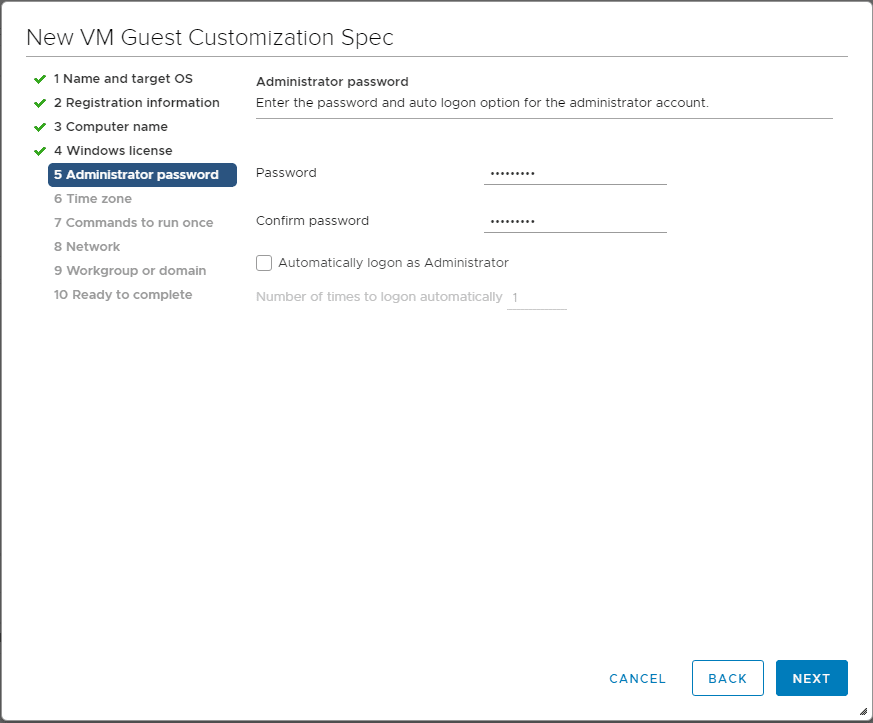
Configure the time zone for the virtual machine.
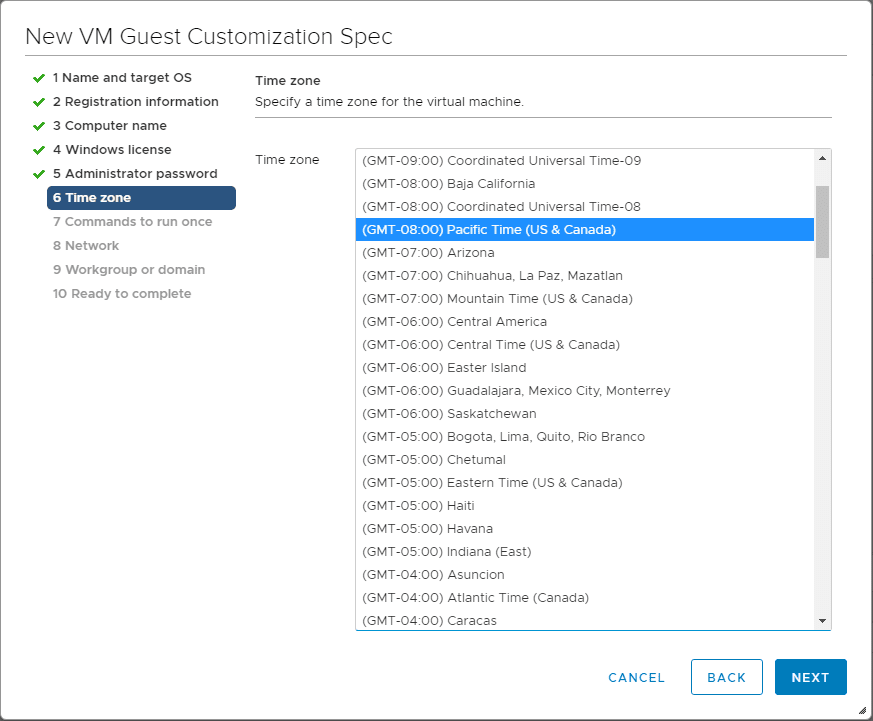
If we have any commands we want to run the first time a user logs in, we can add those on the Commands to run once screen.
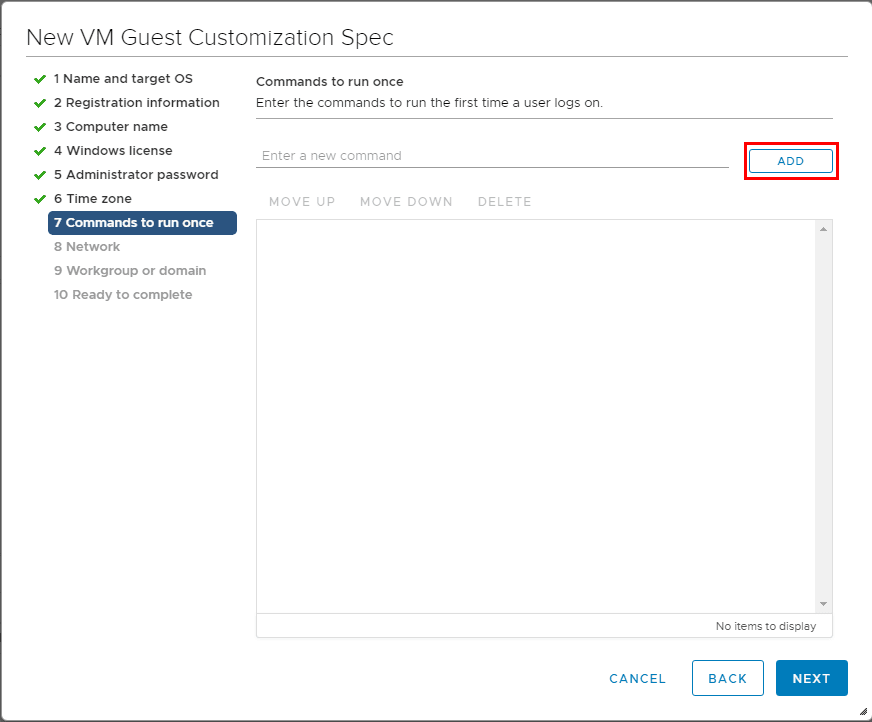
Network connectivity can be configured as well. We can use standard network settings or manual select custom settings for the virtual machine.
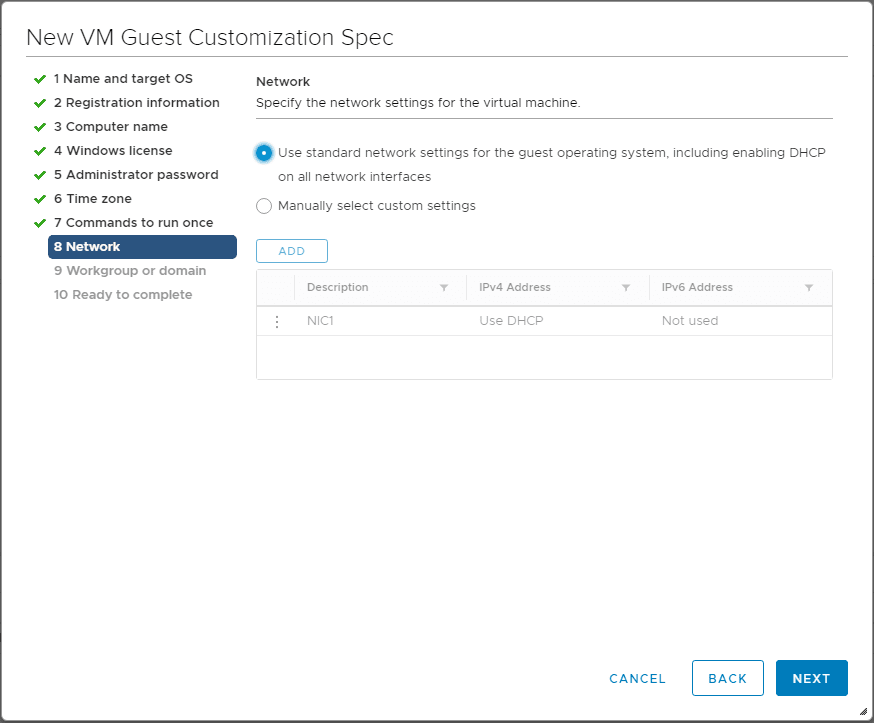
Workgroup or domain allows us to choose which we want to join our virtual machine to.
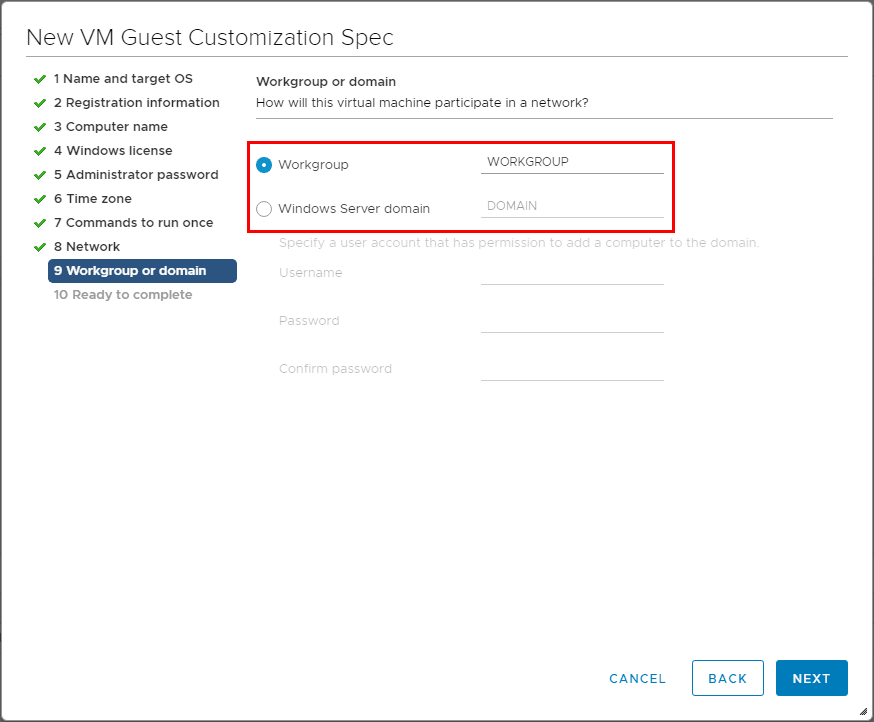
Review the settings screen to make sure we have everything we want to configure in VM customization specification.
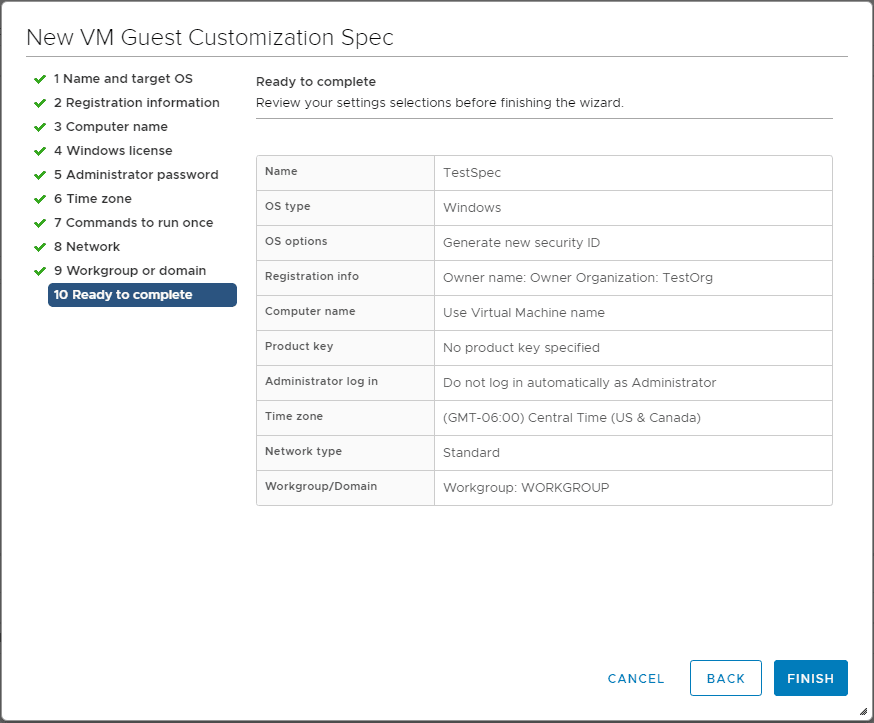
Using VMware vSphere VM Customization Specification
Now that we have the VM customization Specification created, let’s see what we can do with it. Below you should see your newly created VM customization specification listed.

If we choose to clone a virtual machine, on the customize guest OS screen we will see the VM customization specification listed.
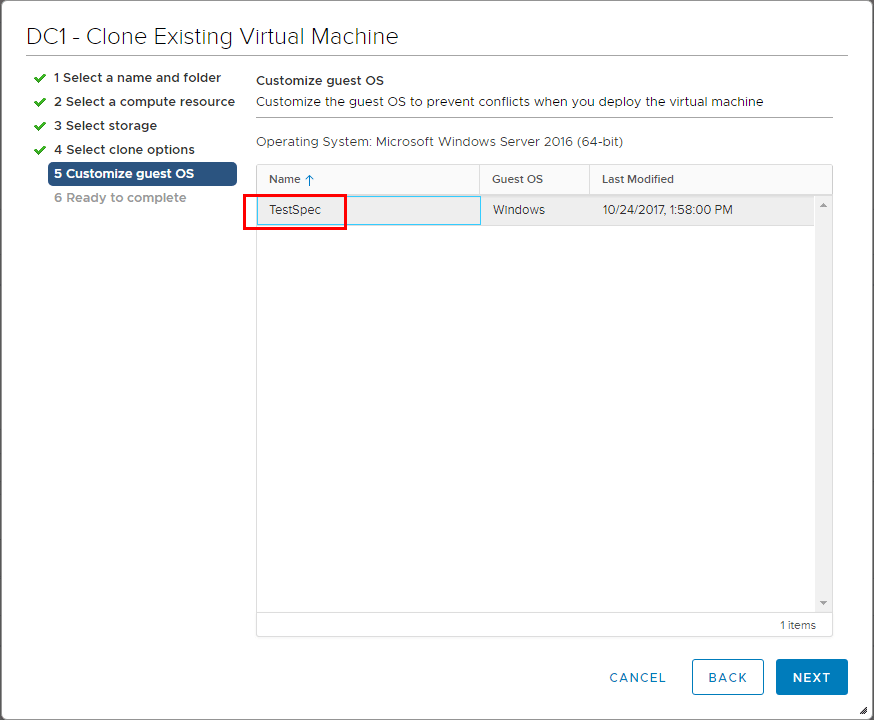
If we have an existing virtual machine, we can power off the virtual machine and run the customization specification against the existing virtual machine by right clicking the virtual machine and choosing Guest OS >> Customize Guest OS.
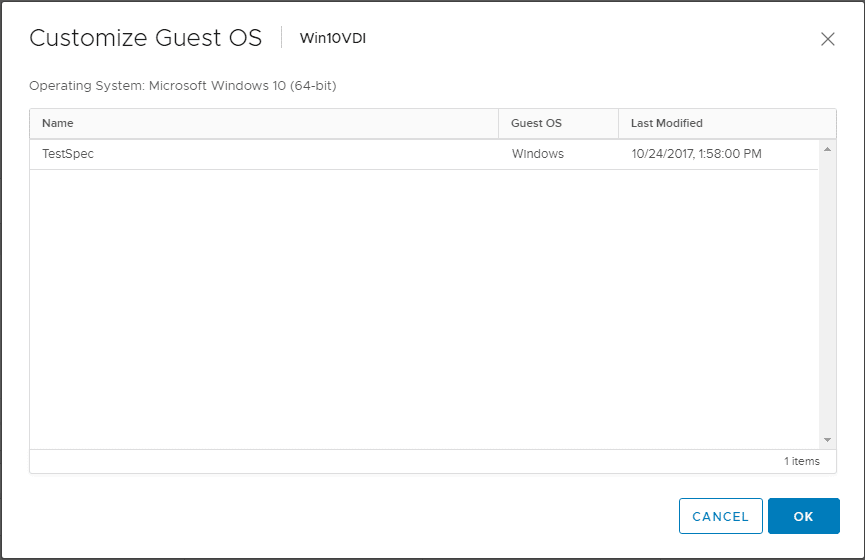

The VM customization specification should be applied to the virtual machine and should reboot after settings have been applied.
Verifying VM Customization Specification was successful
To verify the VM Customization Specification was successful we can quickly take a look at the owner information on our virtual machine to see if it has been successfully changed.
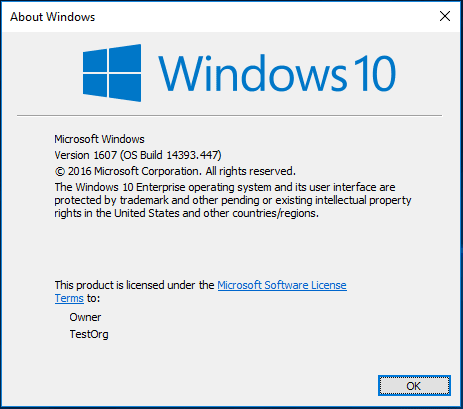
Thoughts
Using VMware vSphere VM Customization Specification is a great way to take a lot of the mundane heavy lifting out of provisioning a virtual machine. The VM customization specification is easily created and can be used for mass deployments, etc. Also powerful is that it can be applied to new clones, deploying from template, and existing virtual machines that are powered off.








